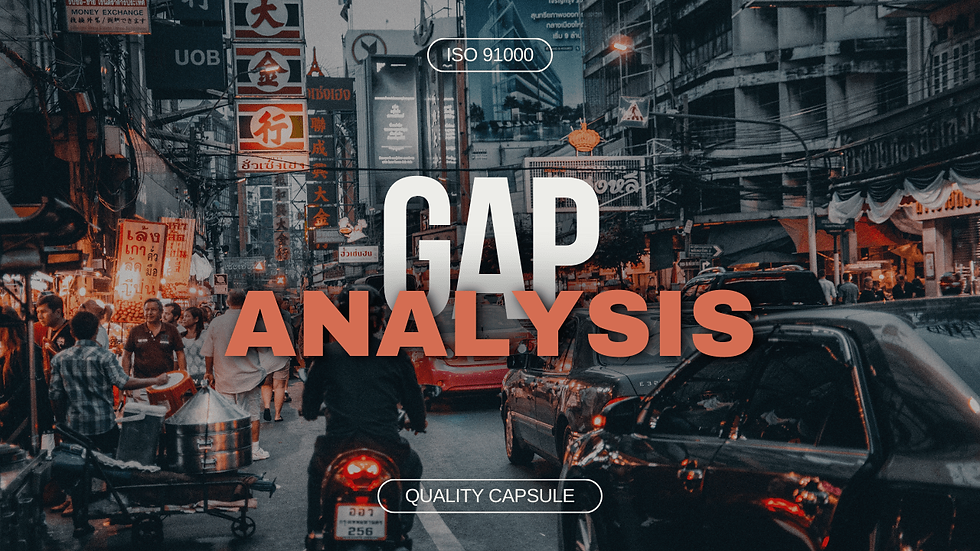Developing a Risk Management Plan: A Step-By-Step Guide
- islam Arid

- Mar 20, 2024
- 3 min read
Updated: Apr 1, 2024

Whether you’re planning a specific project or overseeing crisis management for the whole organization, you need to be prepared for the chance of something going wrong. No endeavor ever goes completely to plan, but with an appropriate risk management system in place, you can make sure that your operations are able to continue no matter what setbacks may arise.
Here are the critical steps to follow to create a successful risk management plan.
1) Identify All Potential Risks
This may sound like an overwhelming place to begin, but you can’t prepare for emergencies without first considering what those emergencies might be. Breaking down this process into smaller steps will help to ensure that all possible risks will be considered, so bring together your project team members or project sponsors, as well as voices from other business departments. Ask each one to brainstorm a list of any potential risks in their purview.
Risks aren’t limited to cyber-attacks and natural disasters. Rather, risks are any uncertain event that could disrupt your normal business operations. For example, imagine that you owned a grocery delivery company in early 2020. Pandemic-induced lockdowns would cause demand for your services to spike—and if you weren’t prepared to handle such a surge, that could lead to customer dissatisfaction and loss of income. So cast a wide net for business risks, to plan your mitigation strategies accordingly.
2) Eliminate risks wherever possible; design preventative measures for those that remain.
Some risks can be resolved as soon as you identify them. If you can alter a policy or restructure a team to circumvent the potential risk, then do so. Other risks, however, simply cannot be avoided. (For example, you can’t just cease using the Internet to avoid cybersecurity risk.) In such cases, your next step should be to determine how best to prevent these events from occurring. Carefully consider what actions you can take now, either to prevent those risks or to ease the harm they might cause.
3) Perform a risk assessment and develop your risk register.
Once you have a list of identified risks, assess each one in-depth to determine its likelihood and potential impact. Your assessment process should consider which events have a high probability of occurring and which ones would cause the most harm. This information is necessary to create a project risk register, which will be a major component of your planning as your project progresses.
A risk register is a written document (often presented as a table) that lists potential risks, along with their likelihood of occurring, possible impact, mitigation actions to prevent them, and contingency plans in the event that they do occur. Give priority to known risks that have the potential for the most damage to the project as a whole. The risk register should be kept and maintained by the project manager, and reassessed regularly.
4) Assign responsibilities and contingency plans for the future.
Now divide and conquer. Take the risks and action steps contained in the risk register, and designate which business departments should address each one. By dividing responsibilities throughout the organization you can reduce the chance that a potential crisis will be overlooked. You can also use this step to create a formal chain of command for when emergencies inevitably occur.
The key to risk management is to create a system by which your team knows exactly what to do in the event of a crisis. Establishing ownership of the risks in your register—that is, assigning responsibility and accountability—is critical. That’s the difference between talking about how risks should be managed and implementing a plan to ensure that risks actually are managed.
Emergencies happen quickly, and a clear assignment of responsibilities and action steps will help the business return to full functionality as quickly as possible. Your team should be trained to recognize warning signs that might lead to emergencies. They should also know exactly when in that process they should raise alarms, and begin containment or contingency protocols.
5) Monitor risks and adjust the plan as needed.
Risk management is not a chore the business does once and then risk management is “done.” It’s an ongoing process. Risks should be monitored to see how they evolve, and then your risk management plans should be revised as necessary to keep pace with those changes. Monitoring of risks should be built into the ownership in your risk register, and your plan should be revisited on a regular basis to verify that the appropriate prevention measures are still in place.
Dealing with uncertainty can be challenging. Creating your risk management strategy in advance can be instrumental in the success of your project. With the right action plan, you can be sure that you are well-prepared for any situation that comes your way.























Comments